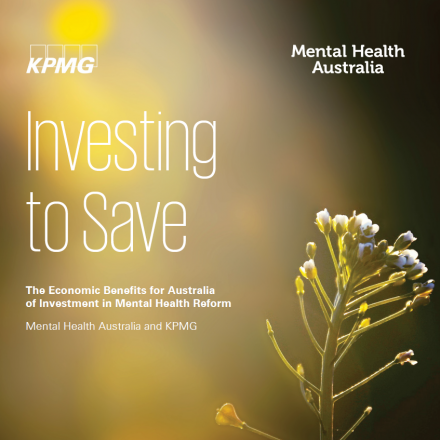Angry young men and why we need a plan for young men's mental health
 Article by Dr Simon Rice, Research Fellow at Orygen, The National Centre of Excellence in Youth Mental Health
Article by Dr Simon Rice, Research Fellow at Orygen, The National Centre of Excellence in Youth Mental Health
Young men in Australia are angry. At least many of them are. The impact is visceral, felt largely by our families and communities. Just look to rates of alcohol related violence seen every weekend throughout Australia.
Our dominant culture of masculinity emphasises that men shouldn’t show weakness. So they don’t. They show strength. While there are undoubtedly exceptions, traits of stoicism, competitiveness, toughness and inexpressiveness are emphasised and prized for men in general. At times these traits operate positively and adaptively, especially during competitive physical contact sports where bravery is heralded. However, when it comes to mental health, these same characteristics all too often prevent recognition of, and help-seeking for emotional distress.
Managing anger is one of the key developmental tasks of growing up. It is fuelled by adverse experiences from childhood and adolescence, and can be a common surface manifestation of mental-ill health. It is important here to note two key facts. Difficulties with anger can be a key stepping stone to suicide, and anger responds well to treatment.
Within Australia, young males experiencing mental ill-health report the lowest rates of professional help seeking of any demographic group across the lifespan. These rates are especially pronounced for at-risk populations, including young Indigenous males, young same-sex attracted males and young males living in rural and isolated areas. Surely we can do better.
Males tend to disconnect from healthcare services when they enter adolescence, marking a trajectory of disengagement with healthcare that often continues throughout early and middle adulthood. Given this, it is unsurprising that young males are well overrepresented in morbidity and mortality statistics.
Broadly speaking, masculinity is viewed by young men as a construct to be defended or performed – something hard won, and easily lost. Recent experimental research undertaken with young adult males shows exactly this; that masculinity is precarious – both difficult to achieve and tenuous to sustain. In a series of studies, perceived threats to masculinity have been found to activate corresponding displays of aggression, competition and strength. Paired with the greater social ridicule that males receive relative to females for engaging in non-traditional gendered behaviours (e.g., displaying vulnerable emotions, seeking help from peers or professional support services, or expressing hurts), it is clear that a new strategy is needed to engage this group.
Within the last decade a growing awareness has emerged of the relationship between some young men’s experiences of emotional distress and their outward aggression, harmful alcohol use and reckless and risk-taking behaviours. Note that these behavioural expressions, or coping strategies, are in stark contrast to the mental health symptoms most frequently associated with emotional distress, i.e., depression, which includes inward and internalised experiences of sadness, tearfulness, withdrawal, and worthlessness. The phenomenological link between young men’s underlying emotional distress and outward behavioural expressions may in part explain why this group are half as likely as young women to be diagnosed with common mental-ill health conditions such as depression, while they are at the same time four times more likely to die by suicide.
Could it be that after all these years we’ve been missing the salient indicators of, and opportunities to intervene in, young men’s emotional distress?
The 2014 Mission Australia report into young people’s mental health found that young females were twice as likely as young males to experience psychological distress. The nature of this reported gender difference garnered significant attention, including calls to provide better mental health services to young females. Of course we need this, and nationwide services such as headspace are constantly working to improve service access for all young people going through a tough time. However, this gender difference shouldn’t be overly simplified.
The 2014 Mission Australia report assessed distress primarily through internalising symptoms (hopelessness, worthlessness, depression), known to be more common in females. Unfortunately the report neglected to assess some of the outward symptoms more likely to be seen in young men. The report does gives an insight to this – distressed young males were more likely than distressed young females to be concerned about externalising responses of drug and alcohol use, gambling, personal safety and discrimination. Further, compare and contrast these findings with the 2013 report on young men’s mental health from the Young and Well Cooperative Research Centre, which found within the last 12 months, one in 10 young Australian males experienced suicidal thoughts, with one in five young Australian males feeling as though life is barely worth living.
We need a better understanding of the concerns of young men, and we need better ways of supporting and encouraging them to take action for their mental health.
This doesn’t mean that we should tolerate or accept young men’s expressions of inappropriate anger. We simply shouldn’t. But what we should do is begin to reorient our mental health services to have a greater understanding of, and willingness to engage these young angry men.
In meeting this challenge, we need to think big, and we need big partners. This year the NRL released the What’s Your State of Mind campaign to engage and educate young men in mental health initiatives and the AFL have taken an active role in the promotion of mental health awareness. This is the kind of sustained investment and promotion that is urgently needed.
What we also need are innovative interventions, rolled out from boardrooms to building sites, and from footy clubs to music festivals. They need to be well designed and evaluated. Most importantly, they need young men’s input. In order to effectively reach their target groups, they need to be designed with the capacity to go viral. Indeed new technology heralds an extraordinary and untapped resource to this end. Social media and social networking have a boundless influence, and this space and is yet to be fully realised for engaging young men.
Most of all however, we need available and existing mental health services to be responsive, acceptable and more inclusive of Australia’s angry young men. Better access to available interventions may assist to reduce some of the aggression, violence and recklessness we see on our streets every weekend. Engaging this group will be challenging, but may just be the key reducing the totally unacceptable suicide rate for young men.
__________
Do you have a comment on this story? Join the conversation on Twitter @AUMentalHealth
Article contributed to the newsletter Perspectives - October 2014. Please note that this article is from an individual contributor and does not necessarily reflect the views of Mental Health Australia


 Article by Dr Simon Rice, Research Fellow at
Article by Dr Simon Rice, Research Fellow at 

